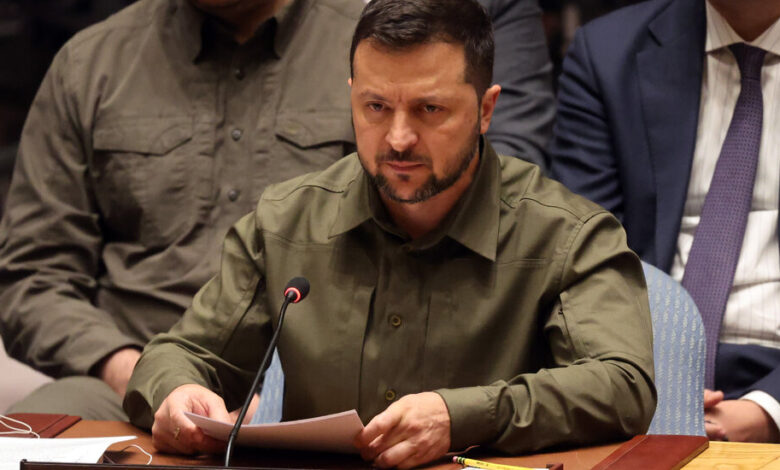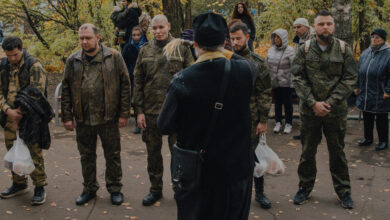U.N. General Assembly: Zelensky Criticizes the U.N. and Presents Peace Plan to End the War

The U.N. General Assembly is gathering this week in New York City for its annual meeting, setting its agenda for the year to come and addressing some of the most pressing social and diplomatic issues around the world.
The Assembly, currently in its 78th session, has undergone tremendous changes as its influence has waned and global politics have shifted.
Here is how the Assembly works.
What does the General Assembly do?
The General Assembly is one of six bodies in the United Nations, including the Security Council and the Economic and Social Council.
The body was established in 1945 as “the main deliberative, policymaking and representative organ” of the U.N., and it is the only one within the U.N. and the wider world of international alliances (NATO, BRICS and the Group of 20, for instance) in which all 193 member states have equal representation. As a condition of membership, each state must pay an “assessed contribution” to the operations of the U.N.
“It is the place where every country has a seat,” said Peter J. Hoffman, an associate professor of international affairs at the New School and the director of its United Nations Summer Study. “It’s tough to herd the cats, but the fact that everybody is in the room together and everybody has an opportunity, that in itself creates a sort of credibility for it.”
At the meeting in New York, representatives from each member state discuss international issues as part of the General Debate and vote on hundreds of resolutions.
What are the Assembly’s powers?
Unlike the U.N. Security Council, which can impose sanctions or authorize the use of force, the General Assembly is purely deliberative. Much of its power is derived from its ability to address issues and make recommendations on matters of international importance.
“In terms of actual resolutions with teeth, that’s never going to happen because when the Security Council issues a resolution, it says, You will do this,” Dr. Hoffman said. “When the General Assembly does it, it’s a recommendation: You should do this.”
For instance, a resolution the Assembly passed in November 2022 allowed for the United Nations’ first commemoration in May this year of Palestinian displacement during the creation of Israel.
The General Assembly also appoints the U.N. secretary general, currently António Guterres, for five-year terms and the Security Council’s 10 nonpermanent members. A new president of the Assembly is elected every year, and the position rotates among representatives of five geographic regions: Africa, Asia and the Pacific, Eastern Europe, Latin America and the Caribbean, and Western Europe and others.
The Assembly meeting gives leaders a global platform. During the General Debate, each member state is allotted 15 minutes to speak on the year’s theme, but that limit is generally disregarded. Last year, President Volodymyr Zelensky of Ukraine delivered a searing rebuke of the Russian invasion of his country in a recorded address to the General Assembly.
What is on this year’s agenda?
The full theme for 2023 is “Rebuilding trust and reigniting global solidarity: accelerating action on the 2030 agenda and its Sustainable Development Goals toward peace, prosperity, progress and sustainability for all.” But the key words are “2030 agenda” and “Sustainable Development Goals.”
In 2015, the General Assembly adopted 17 objectives, collectively known as the Sustainable Development Goals, or S.D.G.s, as part of “a shared blueprint for peace and prosperity for people and the planet, now and into the future.” They include “no poverty,” “zero hunger,” “climate action” and “gender equality,” among others.
The S.D.G.s were formally adopted under a resolution known as Agenda 2030, a reference to when some of them should be achieved, though some goals have no due date. In 2017, a resolution was passed to formalize specific indicators of progress on these goals.
“The real story is that only 15 percent of the S.D.G.s have been met and about half of them are off track,” Dr. Hoffman said.
In an effort to nudge the body, Mr. Guterres issued “a wake-up call to speed up implementation of the S.D.G.s. Member states have been given until 2024 to figure out a way to get the S.D.G.s and Agenda 2030 back on track.
How has the Assembly changed over the years?
Since its establishment, the U.N. General Assembly has grown to 193 member states as of 2011, when South Sudan was admitted, from 51 nations primarily based in Europe, the Americas and the Middle East.
The U.N.’s founding coincided largely with the advent of the Cold War, which then created a wedge between the West and the East, primarily on the Security Council. But the politics of the Assembly have long been dictated by tensions between the wealthy nations of the “global north” — broadly considered to include Australia, Europe, North America, Israel, Japan, South Korea and New Zealand — and the “global south,” largely represented by former colonies of the global north across Africa, Asia and Oceania, Latin America and the Caribbean.
“By the ’60s and ’70s, you really start to see the politics change and particularly the emergence of what was called the new international economic order in the ’70s,” Dr. Hoffman said, “with a proposal basically among global south and nonaligned countries to say, Oh, the terms of the trade are really unfair between the north and the south.”
At the same time, pressure on the global south to begin addressing the destruction of the environment spurred a blistering response in a 1972 speech by Prime Minister Indira Gandhi of India at a U.N. conference in which she asked, “Are not poverty and need the greatest polluters?” as a statement on what she saw as the hypocrisy of the global north in dictating terms to developing countries.




